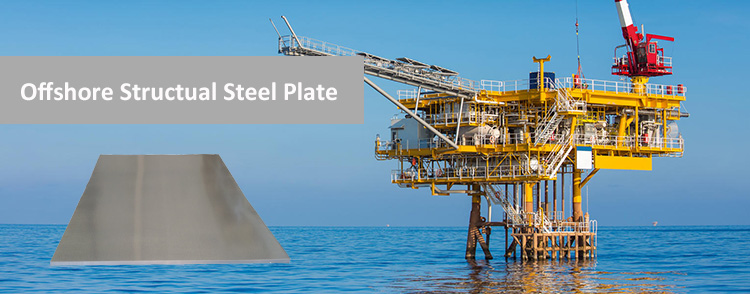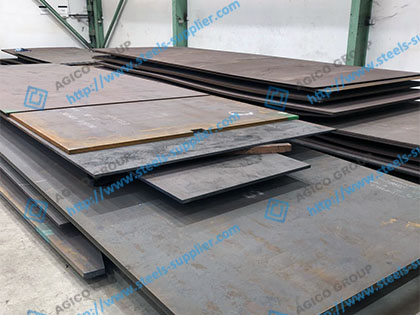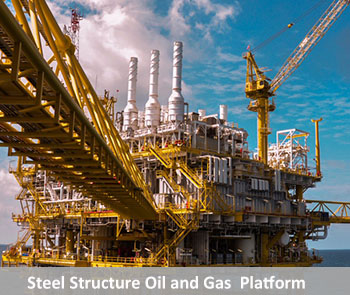
As China continues to increase its marine development, the demand for high-performance offshore platform steel will continue to increase, and offshore octg steel will also become a key product for domestic steel companies to develop and produce in the next few years. Comprehensive analysis of the market demand of China's marine industry and the gap between existing offshore platform steel and foreign products, we can see that detailed research has been carried out on structural components steel such as pile legs, cantilever beams and semi-circular plates are urgently needed to be upgraded, and the special thick gauges steel, polar low temperature steel, the specific development trend is reflected in the following aspects.
Improve Strength and Toughness for Offshore OCTG Steel
From the perspective of structural design of offshore platforms, the use of high-strength and ultra-high-strength steel can effectively reduce the self-weight of the platform structure, increase the variable load and self-sustainability of the platform, and increase the ratio of total displacement to the self-weight of the platform steel structure. Domestic offshore platform steels are mostly concentrated below the E550 level, while foreign similar products are mostly concentrated above the E690 level, and the usage is far exceeding the domestic level. In addition, with the rapid development of deep sea and polar ocean platform construction, the low temperature toughness of marine engineering steel is more important. The demand for the same series of E and F grade steel plates is gradually increasing. The high strength, high toughness offshore platform steel will be The key varieties to be developed in the future.

Develop Low-cost, High Value-added Products
The offshore platform is welded by steel structure, and the proportion of high-strength steel is as high as 60% to 90%. If the design of high-strength steel alloy is reduced, the construction cost of the offshore platform will be greatly reduced. The existing Grade 690 high-strength steels in China use a large amount of precious alloying elements such as Ni and Mo. If the alloy design is used, the design concept of “Mn/C-substituted Ni” can be realized, which can greatly reduce the cost. First, Mn is a strong austenite stabilizing element, and its price is only 1/5 to 1/20 of Ni.
High Mn steel has excellent strength and plasticity and excellent low temperature toughness. The excellent comprehensive performance of high Mn steel can solve the problems of low temperature toughness and high yield ratio of 690 MPa ultra-high strength steel for offshore platforms, which can meet the safety and construction cost requirements of ultra-high strength steel for deep sea and polar offshore platforms in the future. This is also an important development direction for high-strength, high-toughness offshore platform steel.
Low Yield Ratio of Good Forming Properties of Offshore Steel

Considering the bottom structure design of the offshore platform, if advanced pile legs (including pile shoes) structure and lifting mechanism are adopted, the load bearing capacity, impact resistance and durability of the platform will be increased. At present, steel for lifting racks uses 690 MPa grade ultra-high strength steel, but other pile leg steels are generally only 550 MPa grade high strength steel. The main reason is that other structural steels not only require high strength, but also require good forming properties, so the yield ratio is strictly limited. The yield ratio of steel for structural parts in offshore platform safety design is not allowed to exceed 0.85. To ensure sufficient ductility before plastic failure to prevent catastrophic brittle fracture.
Crack Arrest Performance of High Strength Steel
In response to a series of structural fractures and disasters occurring in ships, buildings, oil storage tanks, marine structures, pipelines and other structural facilities, the international engineering professionals have proposed the requirements for the production and application of crack arresting steel plates, and is forming and promoting relevant international standards. If there is a certain amount of retained austenite in the steel, it can deflect along the retained austenite when the crack propagates, or the TRIP effect of the "residual austenite→martensitic" phase transition due to the stress concentration at the crack tip. The phase transformation is toughened, thereby improving the crack arrestability of the steel. Since "Mn/C" alloying can effectively regulate the retained austenite content in steel, it can effectively control the content, size and distribution of retained austenite in steel through reasonable composition design and structural property control. The crack arrest performance is another important development trend of steel for high strength and toughness offshore platforms.


